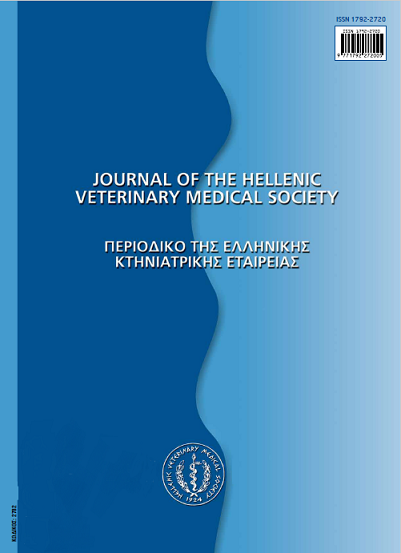Contemporary aspects on the immunopathogenesis of pemphigus group in the dog

Abstract
Autoimmune diseases of the canine epidermis originate from the activation of the immune system against some adhesion molecules, which link the keratinocytes. Epidermal autoimmunity eventually induces acantholysis, which is thepathological hallmark of these skin diseases. In this review article, a thorough analysis of the immunopathogenesis for each of these skin diseases has been attempted along with the mechanisms that modulate the process of acantholysis. Epidermal autoimmune diseases in the dog include pemphigus foliaceus, vulgaris, panepidermal pustular, erythematosus, paraneoplastic and pharmaceutical. The recent advances in immunopathological and molecular techniques have markedly facilitated the understanding of their pathogenesis, thus giving the opportunity for the development of new therapeutic strategies that may lead to their successful treatment.
Article Details
- How to Cite
-
PAPADOGIANNAKIS (E. Ι. ΠΑΠΑΔΟΓΙΑΝΝΑΚΗΣ) E. M. (2017). Contemporary aspects on the immunopathogenesis of pemphigus group in the dog. Journal of the Hellenic Veterinary Medical Society, 55(4), 319–323. https://doi.org/10.12681/jhvms.15128
- Issue
- Vol. 55 No. 4 (2004)
- Section
- Review Articles
Authors who publish with this journal agree to the following terms:
· Authors retain copyright and grant the journal right of first publication with the work simultaneously licensed under a Creative Commons Attribution Non-Commercial License that allows others to share the work with an acknowledgement of the work's authorship and initial publication in this journal.
· Authors are able to enter into separate, additional contractual arrangements for the non-exclusive distribution of the journal's published version of the work (e.g. post it to an institutional repository or publish it in a book), with an acknowledgement of its initial publication in this journal.
· Authors are permitted and encouraged to post their work online (preferably in institutional repositories or on their website) prior to and during the submission process, as it can lead to productive exchanges, as well as earlier and greater citation of published work.


